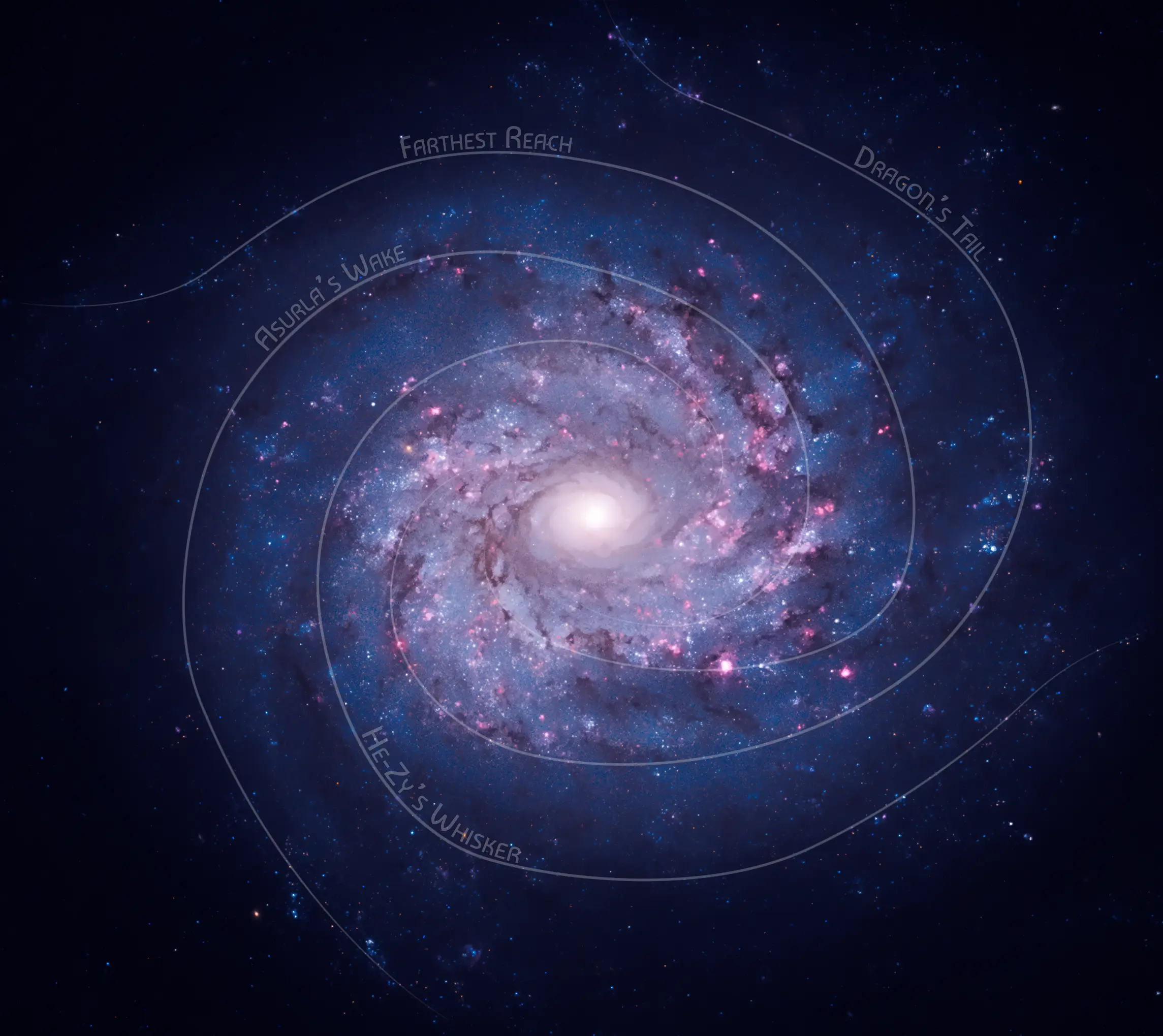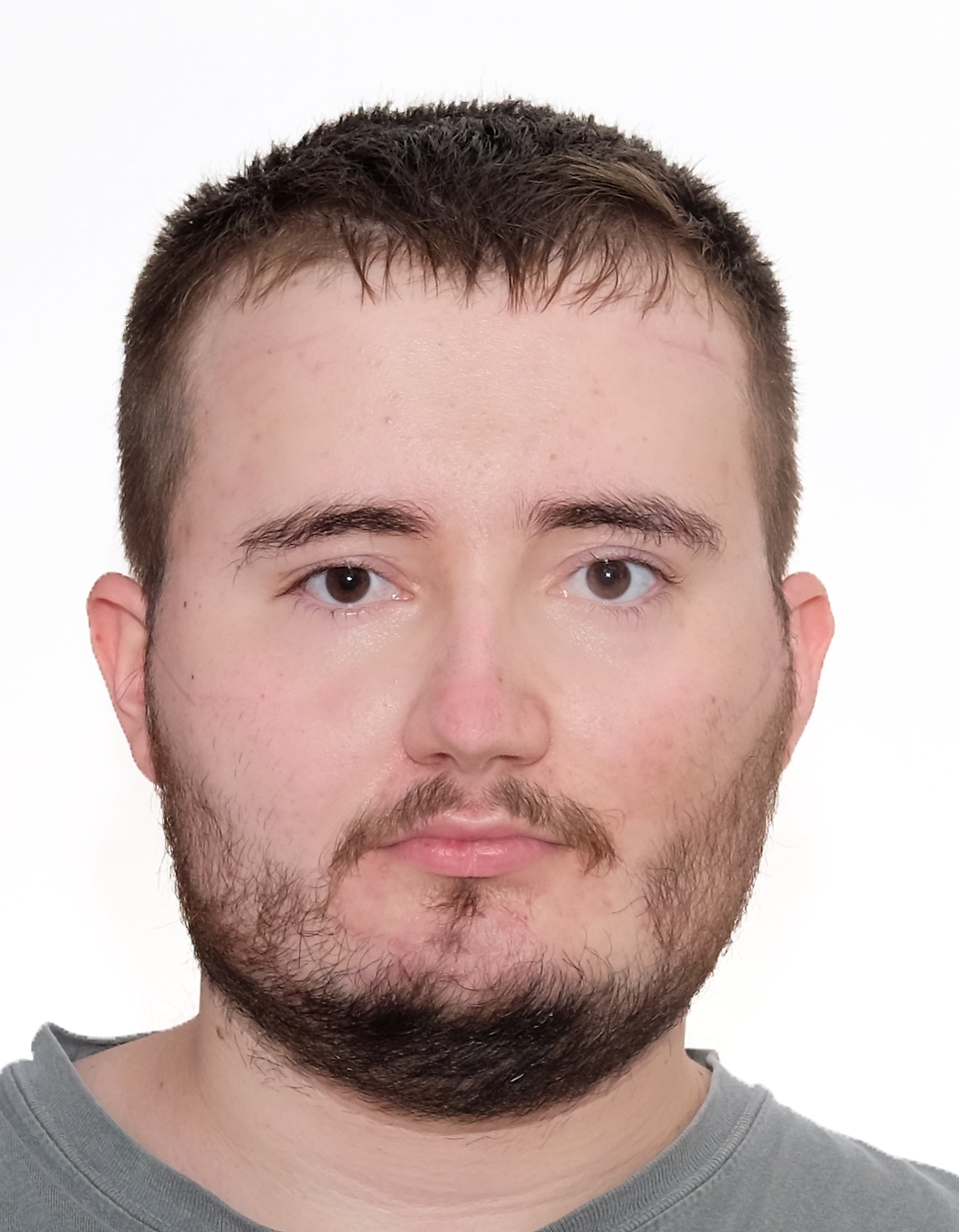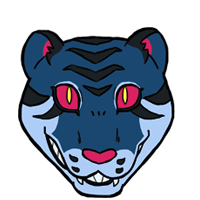The Rosepetal Galaxy
Public astrographic record
Property of the Royal Atheneum of Hövnís, Eörpe
The Rosepetal is a spiral galaxy located in the Ahjroouv'suuh Cluster, which in turn is located within the Ahjroouv Supercluster.
The Ahjroouv Supercluster along with the Pahraju Supercluster - speculated to contain the galaxy the ancient humans originated from - are both categorized as being part of the same, even larger cluster named the Jhosruv Primocluster.
Astrography
The Rosepetal is approximately 127,000 lightyears in diameter and contains roughly 350 billion stars. The galaxy’s luminous disc revolved around a supermassive black hole estimated to be as large as 4 million suns massed together. It bulges around it's central supermassive black hole and forms the bright sphere known as the deep core; a region around 6,500 lightyears across and containing roughly 25 billion tightly compacted stars. Closer to the center the stars were only a hundredth of a lightyear apart and were known to collide and rip out each other’s stellar cores. This made the area extremely dangerous to travel as the stellar activity was so high and the presence of black holes immense. Most of the stars outside the deep core region are collected into four spiral arms that rotates around it. The brightest supergiants are concentrated around these arms, as well as glowing clouds of gas and dust which contributed to the apparent gaps between the arms even though these areas were also full of stars. When watching the galaxy on the Z-axis, one could see that most stars were within 800 lightyears above or below the plane of the luminous galaxy disc. It formed a 1600-lightyears wide region known as the thin disc. 3900-lightyears wide on either side was the thick disc which were much poorer in stars than the thin disc and even fewer in planetary systems. Beyond the thick disc is the stellar halo, which is a huge sphere surrounding the entire galaxy with a few billion stars in highly elliptical orbits. Roughly 150 globular clusters orbited within this region; mainly lifeless and packing hundreds of thousands of extremely old, inhospitable stars into areas only a 100 or so lightyears across. Many of the globular clusters are visible from habitable space and were usually considered very beautiful sights.Astrochart
Astrographic Data
The Axiom
The Blazzus Nebula
The Enigma
The Blazzus Nebula
The Enigma
Demographic Data
The Hextlan Accord ~6.25%
The Llucav Technocracy ~4.25%
The Lukariat ~2.17%
The Qcwu Ssractxa ~3.33%
The Raukk Dominion ~4.83%
The Rin Sovereignty ~5.08%
The Twin Sun Alliance ~7.25%
The United Worlds ~16.16%
The Wheel ~18.83%
Free Worlds ~6.67%






A well-constructed description of the galaxy; with the use of headings and subheadings making the text easy to navigate. The mention of the different types of stars and their likelihood for habitability is also a nice touch.
Thank you for the feedback! I plan to revisit this article once I have gotten some more of the foundation down, and add some more links and references. Thought it'd be nice to have this as a primer of sorts for the setting.